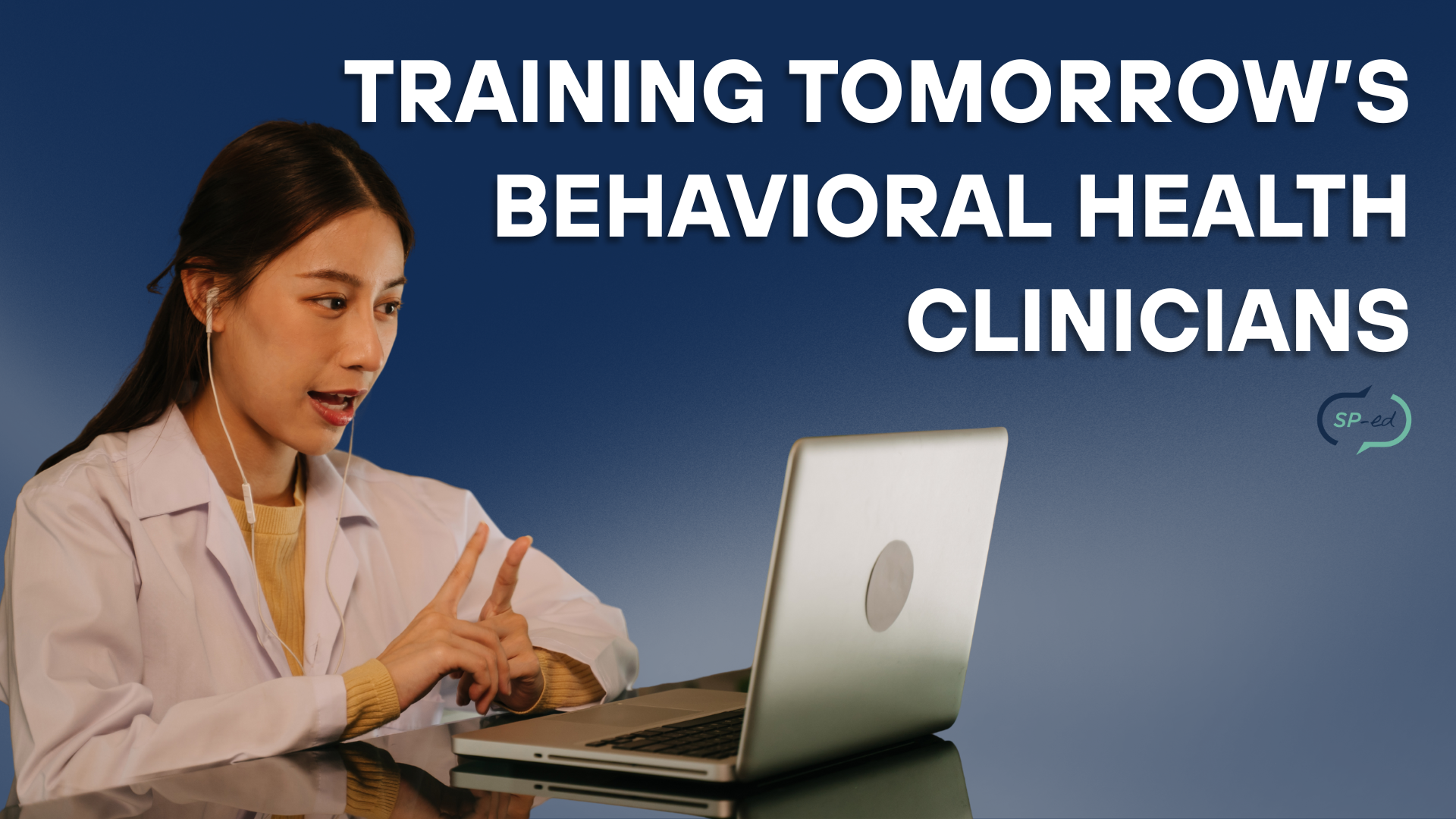Behavioral Health Education
A Field in Flux: Training Tomorrow’s Behavioral Health Clinicians
Mental health is no longer a “niche.” Demand for services is skyrocketing, waitlists are stretching, and patients are arriving at appointments with high-level knowledge (and sometimes misinformation) about their diagnoses. Meanwhile, counseling and psychology programs are moving online, making education more accessible but also raising the stakes: How do we make sure students come out as whole, relationally strong clinicians, not just theory experts behind a screen?
To explore these questions, we turned to two leaders shaping the future of behavioral health education.
Voices Shaping the Future
Dr. Brayden Kameg, PhD, DNP, PMHNP-BC, CARN-AP, CNE, FIAAN (she/her), Associate Professor of Nursing at the University of Pittsburgh, serves as Coordinator of the Psychiatric-Mental Health Nurse Practitioner Program and Director of the Mental Health Nurse Practitioner Residency Program at the Veterans Administration Pittsburgh Healthcare System.
Dr. Kelly Duggan Shearer, PhD, LMFT, LPCC (she/her), is Program Director of the M.A. in Clinical Counseling Online and an Associate Professor at Point Loma Nazarene University.
Their insights, combined with new program outcome data from learners in psychiatry, psychology, and counseling, point to where behavioral health education must go next.
External Pressures, Internal Challenges
“In the last five years, there have been significant changes to mental health treatment and access, including an increased demand for services and an increase in the availability of telepsychiatry services. This has coincided with a rapid expansion of mental health content on social media platforms. We are seeing patients who are now more informed about mental health-related problems, although the quality of the information that our patients are consuming widely varies.”
—Dr. Brayden Kameg
“There’s been greater interest in online learning formats. This is fabulous because it provides greater accessibility to students who might not otherwise be able to pursue a career in the behavioral health field. Yet, when training students to become behavioral health clinicians, we need to train them to be relationally strong clinicians in addition to being conceptually strong clinicians.”
—Dr. Kelly Duggan Shearer
Together, these perspectives spotlight a two-sided tension: external demand for innovative care and internal demand for innovative teaching.
What Students Really Need
Students are not lacking in ambition or knowledge, but both faculty leaders agree they need support in becoming confident, relational clinicians.
“Students need opportunities to practice therapeutic communication and interviewing skills with patients from diverse backgrounds. Simulation is one way to strengthen this particular skill. Not only can students practice engaging with complex patients, but they can also receive real-time feedback from faculty experts.”
—Dr. Brayden Kameg
“Students need to develop the ability to face challenges, remain calm, and move forward with self-compassion. It’s ok to make mistakes! It’s ok to not know what to do! But it’s not ok to run away from this challenge… The ability to build strong relationships very quickly can make the therapeutic relationship more robust and able to withstand the normative mistakes that new clinicians make.”
—Dr. Kelly Duggan Shearer
Data Speaks: Simulation Works
- 84% said their simulation experience enhanced communication skills and therapeutic rapport.
- 87% reported feeling more confident managing complex, real-world patient encounters.
- 100% rated SP portrayals as authentic and realistic.
Learners themselves shared:
- “This was truly helpful for establishing interview flow and getting immediate feedback!”
- “The SP was very believable… I was impressed at how she was able to transition and give me feedback. Her performance was extraordinary and allowed me to forget that this was a simulation.”
- “I really enjoyed this experience, felt very realistic, and allowed me to practice delivering care over telehealth platforms.”
One student summed it up: “This was an extremely helpful experience and helped me acknowledge areas that I need to work on & where I hesitated. I loved hearing the feedback from the SP.”
This is exactly the combination Dr. Duggan Shearer and Dr. Kameg describe: safe environments for practice, plus feedback that sharpens both relational and professional skills.
The Road Ahead: Telehealth & Simulation as Core Training
“Simulation will continue to become an integral part of psychiatric and mental health training across disciplines. Furthermore, preparing students to deliver virtual care will become the norm across the industry, enhancing healthcare quality and access.”
—Dr. Brayden Kameg
“I think that virtual care/telehealth is here to stay. This means that we need to use additional modalities to train students to see clients that sit in the same room with them, and those that are on a screen.”
—Dr. Kelly Duggan Shearer
The future clinician must be flexible; equally comfortable connecting in a clinic or through a camera. Simulation offers the bridge, letting students “get their feet wet” in virtual environments while practicing the timeless skills of communication, empathy, and presence.
Conclusion: Faculty + Data = A Clear Direction
When faculty voices and learner outcomes converge, the message is clear: behavioral health education is at a crossroads, and simulation is a proven way forward.
The clinicians of tomorrow won’t just need to know the DSM or psychopharmacology. They’ll need to build rapport in minutes, stay calm in the face of uncertainty, and deliver care through a screen without losing the human connection.
The good news? Educators already have tools to prepare them — simulation, SP methodology, and feedback-rich environments. Now it’s about scaling those tools to meet the growing demand.

